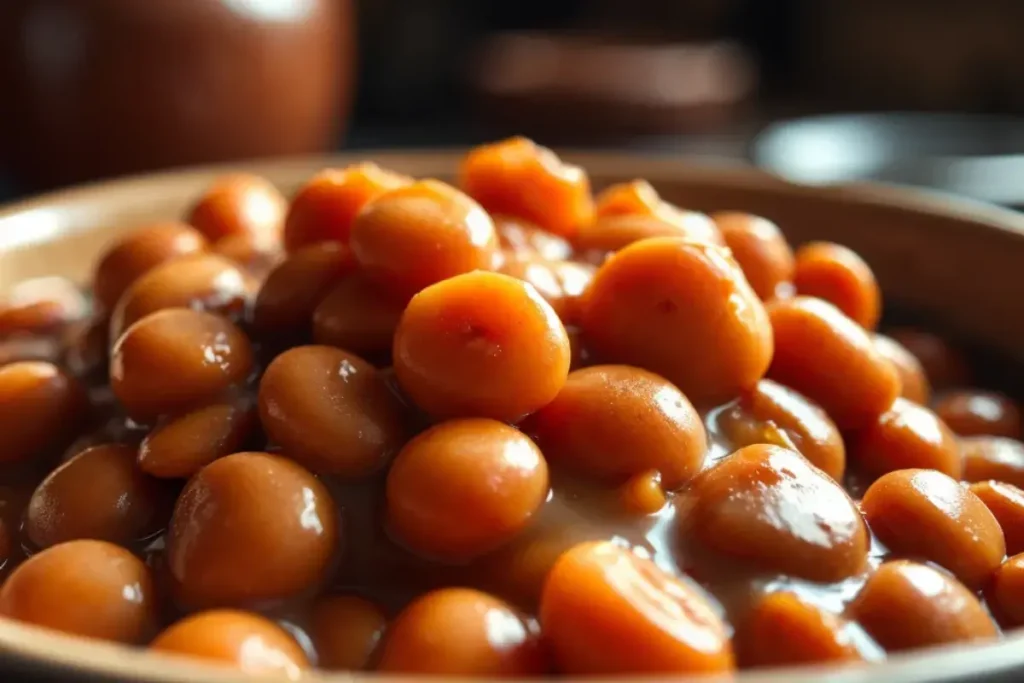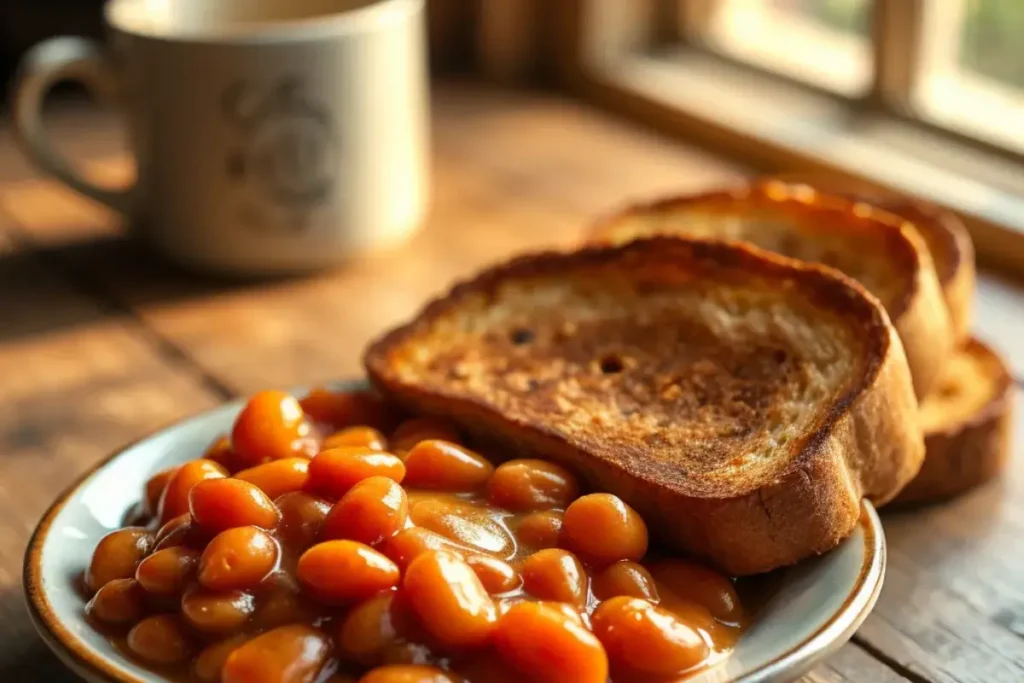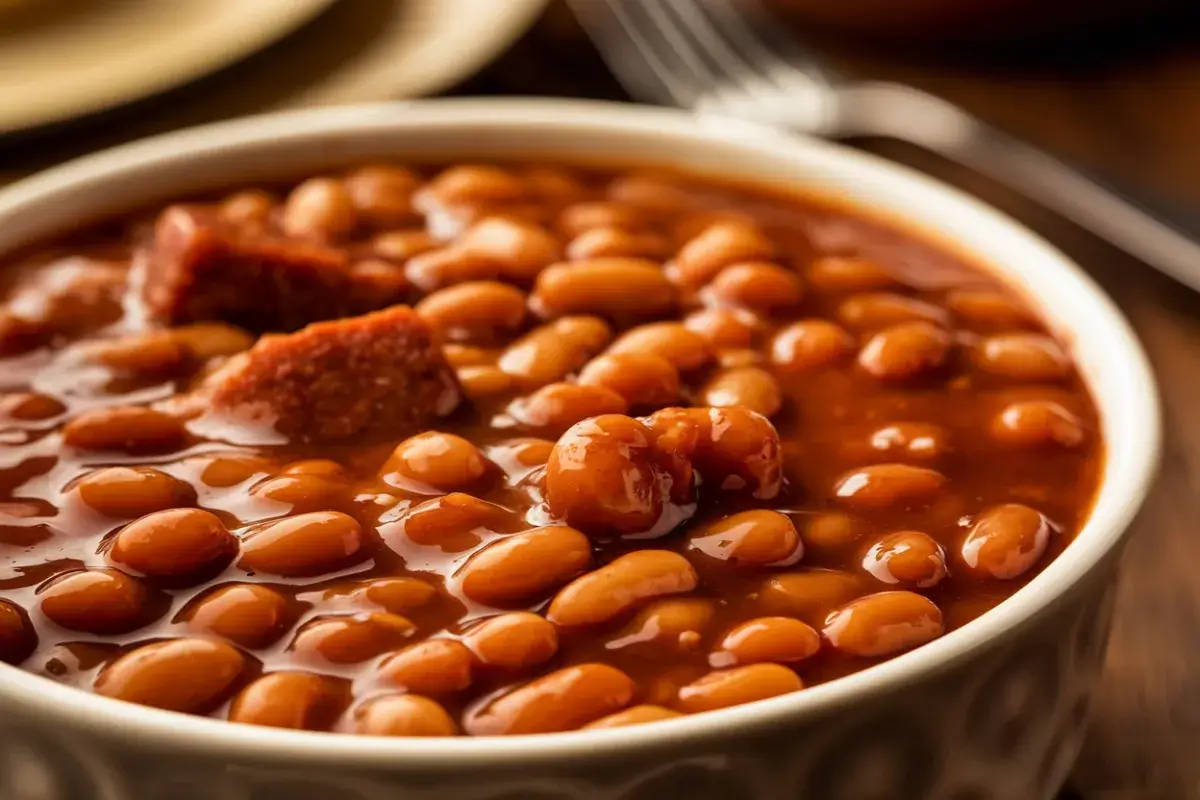Baked beans are a classic dish enjoyed by many, but getting the perfect soft texture can be a challenge. Whether you’re preparing a batch of homemade baked beans or simply cooking dried beans for another recipe, you may have encountered the frustration of hard or tough beans even after hours of cooking. So, what’s the secret to soft baked beans that will give you perfectly tender results every time?
In this article, we’ll dive into the science behind soft baked beans, explore different cooking methods, and share the techniques that will guarantee your beans are melt-in-your-mouth tender.
Understanding the Science Behind Soft Baked Beans
Beans soften through a natural process during cooking, but understanding how this happens can help you fine-tune your cooking approach. The secret lies in the structure of the beans themselves. When beans are cooked, the starch inside the beans gelatinizes, and the cell walls start to break down, creating that desired soft texture.
However, factors such as bean age, acidity in the cooking environment, and even the minerals in your water can slow or prevent this process. If you’ve ever wondered why some beans stay firm no matter how long you cook them, it might be related to these factors.
According to Serious Eats, bean softening is influenced by both temperature and pH levels, which play a critical role in breaking down the bean’s tough skin and dense interior.
Choosing the Right Beans: A Secret to Soft Baked Beans
Not all beans are created equal when it comes to achieving a soft texture. Some beans naturally soften more easily than others. For baked beans, navy beans are a popular choice due to their ability to soften without falling apart. Cannellini beans and great northern beans are also excellent options if you prefer a creamier consistency. Learn more about the best beans for baked beans and how to choose the right type for your recipe.
The age of your beans can also have a significant impact. Older beans have a tougher outer skin and may take longer to cook or remain hard even after prolonged cooking. Always aim for the freshest dried beans possible, or opt for canned beans for a softer texture straight out of the can.
Soaking Beans: A Key to Softness
One of the most important steps in achieving soft baked beans is soaking the beans before cooking. Soaking helps to rehydrate the beans and jump-starts the softening process, making them cook faster and more evenly.
There are two main methods for soaking beans:
- Overnight soaking: Soak your dried beans in a large bowl of water for at least 8–12 hours. This method ensures the beans absorb plenty of water and cook evenly.
- Quick soaking: If you’re short on time, you can use the quick soak method. Bring a pot of water to a boil, add your beans, and let them boil for about 2 minutes. Turn off the heat, cover the pot, and let the beans soak for 1 hour before draining and cooking.
Benefits of Soaking Beans
- Reduces cooking time
- Promotes even cooking
- Enhances the soft texture by breaking down some of the indigestible sugars
Alternative Soaking Methods
For those looking for ways to enhance the softness of their beans further, there are some alternative soaking methods worth considering.
- Salt soaking method: Add salt to your soaking water (about 1 tablespoon per quart). Salt softens the bean skins and helps them cook more evenly.
- Baking soda soaking method: Baking soda can help soften beans faster. Add about 1/8 teaspoon of baking soda per cup of beans to the soaking water to alter the pH and speed up the softening process.
- Hot soak technique: Combine both soaking and heat. Bring your beans and water to a boil, remove from heat, and let the beans soak for about 4 hours.
These methods help make the beans softer and ensure that they don’t remain tough after long cooking periods.
Cooking Time and Temperature: Another Secret to Soft Baked Beans

Cooking time and temperature are key factors in achieving soft baked beans. If beans are cooked for too short a time or at too low a temperature, they may not soften properly. To reach the desired tenderness, it’s essential to find the right balance between cooking time and heat.
- Cooking time: Different types of beans require different cooking times. For example, navy beans generally take 1–1.5 hours to cook, while kidney beans may take longer.
- Slow cooking: Using a slow cooker or low-and-slow stove method is often the best approach. Cooking beans over low heat for an extended period allows them to absorb water and soften evenly.
- Boiling: If you prefer to boil your beans, make sure they are covered in water and cook them at a gentle simmer. Avoid a rapid boil, as it can cause the beans to split before they soften internally.
Remember, a low temperature and longer cooking time are ideal for soft and creamy baked beans.
Enhancing Softness with Acidity and Alkalinity
The acidity or alkalinity of your cooking environment has a direct impact on how soft your beans will become. Acids, such as vinegar or tomatoes, can prevent beans from softening. If you’re adding acidic ingredients to your baked beans recipe, it’s best to do so after the beans have softened.
On the other hand, using a small amount of baking soda can help create an alkaline environment that promotes softening. Just be cautious with the amount, as too much can give the beans an unpleasant taste.
How Acids and Alkaline Substances Affect Beans
- Acidic ingredients: Slow down the softening process by strengthening the bean skins.
- Alkaline ingredients (like baking soda): Speed up the softening process by breaking down the skins and making the beans more tender.
Salt’s Impact on Bean Softness
Another frequently misunderstood factor in bean softness is the timing of salt addition. While many believe that adding salt too early in the cooking process can toughen beans, research shows that this isn’t necessarily true. In fact, adding salt early on helps beans cook more evenly by preventing the skins from bursting while the insides remain undercooked.
When to Add Salt to Beans
- For best results, add salt during the soaking phase. This helps season the beans throughout and ensures the skins remain intact but soft.
- Adding salt toward the end of cooking won’t soften tough beans; it’s more about enhancing the flavor at that point.
Misconceptions About Salt and Tough Beans
- It’s a myth that salt prevents beans from softening. When added correctly, salt can actually improve the texture of your baked beans.
Softening Beans with a Pressure Cooker or Instant Pot
For those looking for a quicker and more efficient way to achieve soft baked beans, a pressure cooker or Instant Pot is an excellent option. These devices significantly reduce cooking time while ensuring even, thorough softening of your beans.
Benefits of Pressure Cooking Beans
- Speed: Pressure cookers can reduce cooking time by up to 70%, which is a game-changer for dried beans that usually take hours to cook.
- Consistency: The high-pressure environment helps to break down the starch and cell walls of beans quickly, resulting in soft, tender beans every time.
- Energy-efficient: Pressure cooking uses less energy compared to stovetop simmering over several hours.
Step-by-Step Guide to Pressure Cooking Beans
- Soak the beans: Even though pressure cooking reduces time, soaking your beans first is still a good idea for the best texture.
- Add water: Place your soaked beans in the pressure cooker and cover them with fresh water (about 2 inches above the beans).
- Season lightly: Add a pinch of salt or other seasonings, but avoid acidic ingredients until after the beans have softened.
- Set the pressure: Seal the lid, set the cooker to high pressure, and cook for 20-30 minutes, depending on the type of beans.
- Natural release: Allow the pressure to release naturally for about 10-15 minutes before opening the lid.
Using a pressure cooker is ideal if you’re short on time but still want to enjoy the creamy, soft texture that makes baked beans so irresistible.
Using Canned Beans: How to Get a Softer Texture
If you’re short on time or don’t have access to dried beans, canned beans are a convenient option. However, canned beans can sometimes lack the tender, melt-in-your-mouth texture that many people expect from home-cooked beans.
How to Soften Canned Beans
- Rinse and drain: Start by rinsing the canned beans under cold water to remove any excess sodium or preservatives.
- Cook them again: To achieve a softer texture, re-cook the canned beans in a pot with some added water or broth. Simmer them on low heat for 10-15 minutes to allow them to soften further.
- Add fats for creaminess: Stir in some butter, olive oil, or bacon grease for added richness and softness.
- Mash lightly: For an even softer consistency, mash a few of the beans with the back of a spoon or a potato masher.
While canned beans are convenient, a little extra effort can elevate their texture, making them almost indistinguishable from home-cooked dried beans.
Extra Tips to Unlock the Secret to Soft Baked Beans
If you’ve followed all the steps and your beans still aren’t as soft as you’d like, don’t worry—there are still a few tricks you can try.

How to Recover Tough Beans After Cooking
- Keep cooking: Sometimes beans simply need more time. Continue simmering the beans on low heat, checking every 15 minutes until they reach the desired tenderness.
- Use baking soda: If your beans are stubbornly tough, try adding a pinch of baking soda (about 1/8 teaspoon per cup of beans) to the pot. The alkaline environment will help break down the bean skins and soften them more quickly.
- Add fat: Stir in some olive oil, butter, or bacon grease. Fats help create a creamier texture and can soften beans, especially when they’re nearing the end of cooking.
Tricks for a Creamier Texture
- Mash some beans: For a creamier consistency, try mashing a portion of the cooked beans. This will help distribute the starch and create a velvety mouthfeel.
- Slow cook longer: If time allows, consider transferring your beans to a slow cooker for another hour or two on low heat. This will allow the beans to soften further and absorb more of the cooking liquid.
Common Myths About Soft Baked Beans
When it comes to cooking beans, there are plenty of myths floating around. Let’s debunk a few of the most common misconceptions:
Myth #1: Salt Makes Beans Tough
One of the most persistent myths is that adding salt too early in the cooking process will cause beans to remain tough. However, as we discussed in Part 1, adding salt to beans while they soak or cook can actually help beans soften more evenly. Salt prevents the skins from bursting while allowing the insides to cook properly.
Myth #2: Hard Water Ruins Beans
While it’s true that minerals in hard water can affect bean cooking times, it doesn’t mean your beans are doomed. If you have hard water, adding a pinch of baking soda or using filtered water can mitigate this issue. So, don’t toss those beans just because of your water quality!
Myth #3: Acidity Doesn’t Matter
As we’ve learned, acidic ingredients like tomatoes, vinegar, or lemon juice can hinder the softening process. It’s best to wait until the beans are fully softened before adding any acidic elements to your dish.
Recipes for Soft Baked Beans
Now that you know the secret to soft baked beans, let’s put that knowledge to use with a couple of delicious baked bean recipes. These recipes are designed to ensure the beans come out soft and flavorful every time.
Classic Soft Baked Beans Recipe
- Ingredients:
- 1 lb dried navy beans (soaked overnight)
- 1 onion, diced
- 1/4 cup molasses
- 2 tbsp mustard
- 4 strips of bacon (optional)
- Salt to taste
- Instructions:
- Preheat the oven to 300°F.
- In a large pot, sauté the onion and bacon until soft.
- Add the beans, molasses, mustard, and water to cover the beans.
- Cover and bake for 4-5 hours, checking periodically to ensure the beans are soft and creamy.
Vegetarian Baked Beans Recipe
- Ingredients:
- 1 lb cannellini beans (soaked overnight)
- 1/2 cup tomato sauce
- 2 tbsp maple syrup
- 1 tbsp apple cider vinegar
- Salt and pepper to taste
- Instructions:
- Sauté onions in a pot until golden brown.
- Add the soaked beans, tomato sauce, maple syrup, and water to cover.
- Simmer on low heat for 1.5-2 hours until the beans are soft and the sauce is thick.
These recipes are sure to deliver perfectly soft, flavorful beans that make an ideal side dish or meal on their own.
You can also explore this baked beans recipe from Fiona Recipes for more variations and inspiration.
Frequently Asked Questions (FAQs)
Why are my beans still hard after cooking for hours?
This could be due to several factors, including the age of the beans, water hardness, or adding acidic ingredients too early. Try cooking them longer or adding a pinch of baking soda.
Can I use baking soda to soften beans?
Yes, adding a small amount of baking soda to your cooking water can help soften the beans by creating an alkaline environment.
Is it better to cook beans with or without salt?
It’s best to cook beans with salt, as it helps them soften more evenly. Adding salt after the beans are cooked will only affect the flavor, not the texture.
Should I soak my beans if I’m using a pressure cooker?
While you can cook beans in a pressure cooker without soaking, soaking helps reduce cooking time and ensures a more even texture.
How can I make canned beans softer?
You can soften canned beans by re-cooking them in water or broth for about 10-15 minutes. Adding fat or mashing them lightly can also enhance their texture.
By following the tips and methods outlined in this article, you’ll unlock the secret to soft baked beans every time, flavorful, and perfectly cooked every time!

